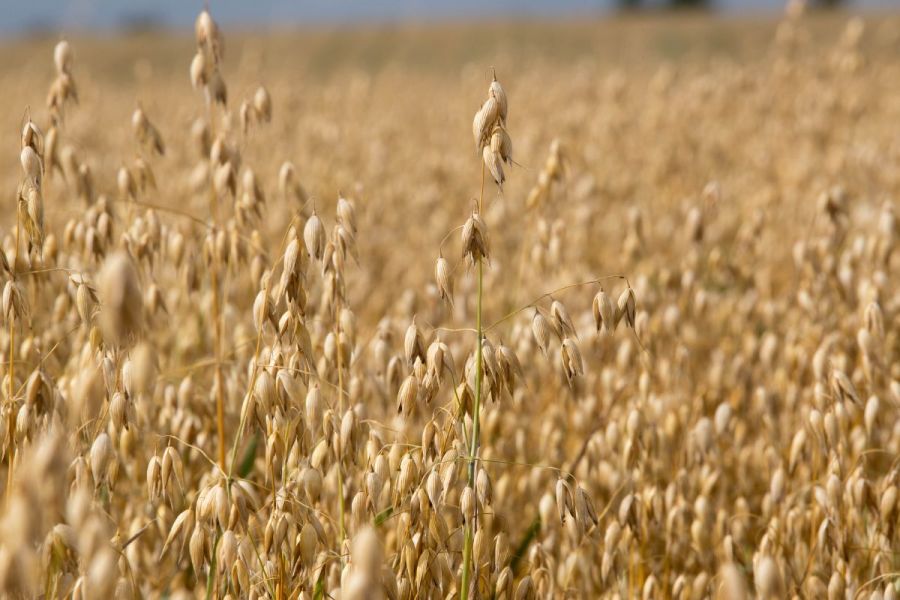Could a signalling compound help milling oat growers to meet quality expectations and maximise the crop’s value? CPM takes a look at the science.
“It could easily be the difference between making milling quality standards or not.”
By Janine Adamson
In the words of English philosopher John Ruskin: “Quality is never an accident; it’s always the result of intelligent effort.” A phrase worthy of being applied to most areas of life, certainly when it comes to the art of growing great oats.
Their high nutritional value means UK consumer demand is increasing, posing an opportunity for growers. But at the same time, according to the AHDB, the UK oat area has reduced for 2023, with the estimated crop between 817Kt and 987Kt.
To maximise the value of what’s been planted, growers aiming for the consumer market will have to meet the stringent quality expectations of milling contracts – a careful balance between grain protein percentage, size (thousand grain weight) and specific weight.
As with other cereal crops, many factors influence the quality of oats, including variety, soil type, the use of crop protection products and weather conditions during the season. So despite being low cost in supermarkets, oats undoubtedly require a Ruskin type approach.

Phil Warham advises growers to use 3ALO T6P biostimulant at the panicle growth stage in oats.
For Agrovista agronomist Phil Warham, this includes exploring the use of a foliar biostimulant treatment which he believes can support growers in achieving milling quality standards. “Millers expect a specific weight above 50kg/hl, which indicates the individual grain density. This is determined by both genetics and the grain filling period,” he says.
“Although genetics depend on the specific variety, growers can influence grain fill through ensuring good photosynthesis levels and the redistribution of carbohydrate reserves up the plant. What’s made a difference for my growers is using 3ALO T6P biostimulant at the panicle growth stage (GS59). It essentially pushes carbohydrates through the crop and gives improved support during that all important grain filling period,” says Phil.
He believes this is key because as well as specific weight, grain filling also impacts the final dry grain weight and appearance. With most oat mill products being whole grain such as rolled oats, steel-cut groats and flakes, maximising these attributes is important.
According to Phil, with big yields hoped for this season, it’ll pay for growers to invest in boosting quality. “Being realistic, as with all biostimulants, it won’t work in every scenario across every farm. But, for those who I’ve recommended it to, 3ALO T6P is having a very real impact on specific weights and the quality of oats. It could easily be the difference between making milling quality standards or not.
“Of course, it’s important to not neglect other areas of crop management, such as optimising nutrition and managing lodging through PGRs, which can be a particular issue for spring-sown crops. Oat screenings should also be avoided, which includes small and broken grains as well as crop debris.”
So what’s 3ALO T6P? As alluded to in April’s issue of CPM (page 41), it’s a signalling compound based on a precursor of the sugar T6P – trehalose-6-phosphate. The molecule regulates metabolic and developmental processes within plants, including carbon fixation and balancing the concentration of carbohydrates, particularly sucrose. As the main fuel generated by photosynthesis, sucrose is key to the development of cereal grain.

The longer the grain fill period, the larger the oat grain size is likely to be, says Nigel Grech.
Peer-reviewed academic research is what attracted Unium Bioscience’s Dr Nigel Grech to the compound and as a result, 3ALO T6P was born. “Maximising the relocation of carbon into yield as carbohydrates or oil, is an area of crop physiology that’s attracted a lot of interest in the last few years. In this instance, not only does T6P help grain development, but it also demonstrates overall improved crop performance under both ideal and stressed conditions.
“For oats, as soon as pollination occurs the embryo and endosperm begin to develop and the plant redirects photosynthates, along with stored starch and protein, into the developing grain. The longer the period of grain fill, the larger the oat grain size is likely to be, which is why T6P has such an impact,” says Nigel.
The recommendation is to apply 3ALO T6P in oats at GS51-59. This is because oat grains develop in a panicle, with each having a number of branches radiating in whorls from the central ranchis (the stem within the panicle that bears the rachillas and spikelets). The spikelets contain two or three florets, which can each produce a grain.
The number of grains per panicle is mainly influenced by variety, however, as with specific weight, this can also be influenced by crop management.
For farmer Matt Fuller of Heathcote Farms, crop management is all about keeping plants healthy. Using 3ALO T6P helps to address not only quality specifications, but also fits with a wider commitment to sustainable crop production.
As well as spring oats, the 1000ha farm in Bedfordshire grows a range of combinable crops including milling wheat, winter feed barley, oilseed rape and winter beans. “We focus on nutrition as a basis for good crop management, including the use of biostimulants in pretty much every tank mix. For two to three years, 3ALO T6P has been our go-to biostimulant for later stage sprays.”

According to Andrew Cromie, new carbohydrate management signalling compounds are in development.
Matt was first introduced to the product through Crop Management Information (now Green Crop Information, a branch of Dyson Farming) and engaged with an on-farm trial around four years ago. Seeing the results first-hand gave him the confidence to take the plunge at a commercial level. “We engage with various on-farm trials because it’s important to see how products such as biostimulants perform within your own unique environment,” he says.
This is because he acknowledges the influence of external variables on product performance. However, he believes the future lies in biologicals. “The farm has to make a living and each crop has to make a profit in isolation. But it’s also important to futureproof the business and reduce the reliance on synthetic chemistry, while addressing the bigger picture through reducing soil disturbance. We’re committed to using 3ALO T6P now, it works for us as part of a sustainable approach,” says Matt.
He’s also seen positive results from applying 3ALO T6P to peas during the flowering stage. This was with the aim of helping the crop to overcome a dry spring by reducing stress and keeping it greener for longer. Despite pressured conditions, the crop yielded 6t/ha which Matt says was pleasantly surprising.
Looking towards the future, Unium Bioscience continues to screen for novel biostimulant and biological technologies. A large-scale screening process undertaken by Nottingham University last year highlighted new pathways which the company hopes to take forward to the next stage.

For Matt Fuller, crop management is all about keeping plants healthy, including the use of biostimulants.
Commenting on this explorative work, Unium Bioscience’s Andrew Cromie says they’ve seen promising results in other carbohydrate management signalling compounds to extend the ‘trehalose pathway’ pipeline.
He explains the company’s also investigating formulation optimisation and alternative delivery mechanisms, including overcoming the challenges associated with seed treatment application. “A new graphite-based seed treatment has shown a lot of promise and has progressed into the final stages of development,” says Andrew.
“During discussions with breeders, it became apparent that traditional liquid biostimulant seed treatments aren’t always feasible. This can be due to the properties of the seed, different species in one bag causing difficulties, and processing machinery not being equipped to apply a liquid seed treatment,” he adds.
According to Andrew, being a graphite-based formulation means the new pipeline product can be easily added to the mixing process for solutions such as cover crop mixtures, companion crops, grass seed blends and stewardship mixes. He also says that through experience on his own farm in Cambridgeshire, he understands the challenges that can be involved when establishing a late cover crop or stewardship mix.
“For the farm’s latest Mid-Tier application, we worked closely with stewardship specialists Oakbank, to review yield maps and highlight underperforming areas of the farm which could be taken out of production,” says Andrew.
“Of course, this presents the challenge of establishing what can often be quite small seeds, within difficult soil types. We hope this new graphite-form biostimulant will improve the overall establishment of such environmental-focused seed mixes in an easy and cost-effective manner,” he concludes.
This article was taken from the latest issue of CPM. Read the article in full here.
For more articles like this, subscribe here.
Sign up for Crop Production Magazine’s FREE e-newsletter here.




